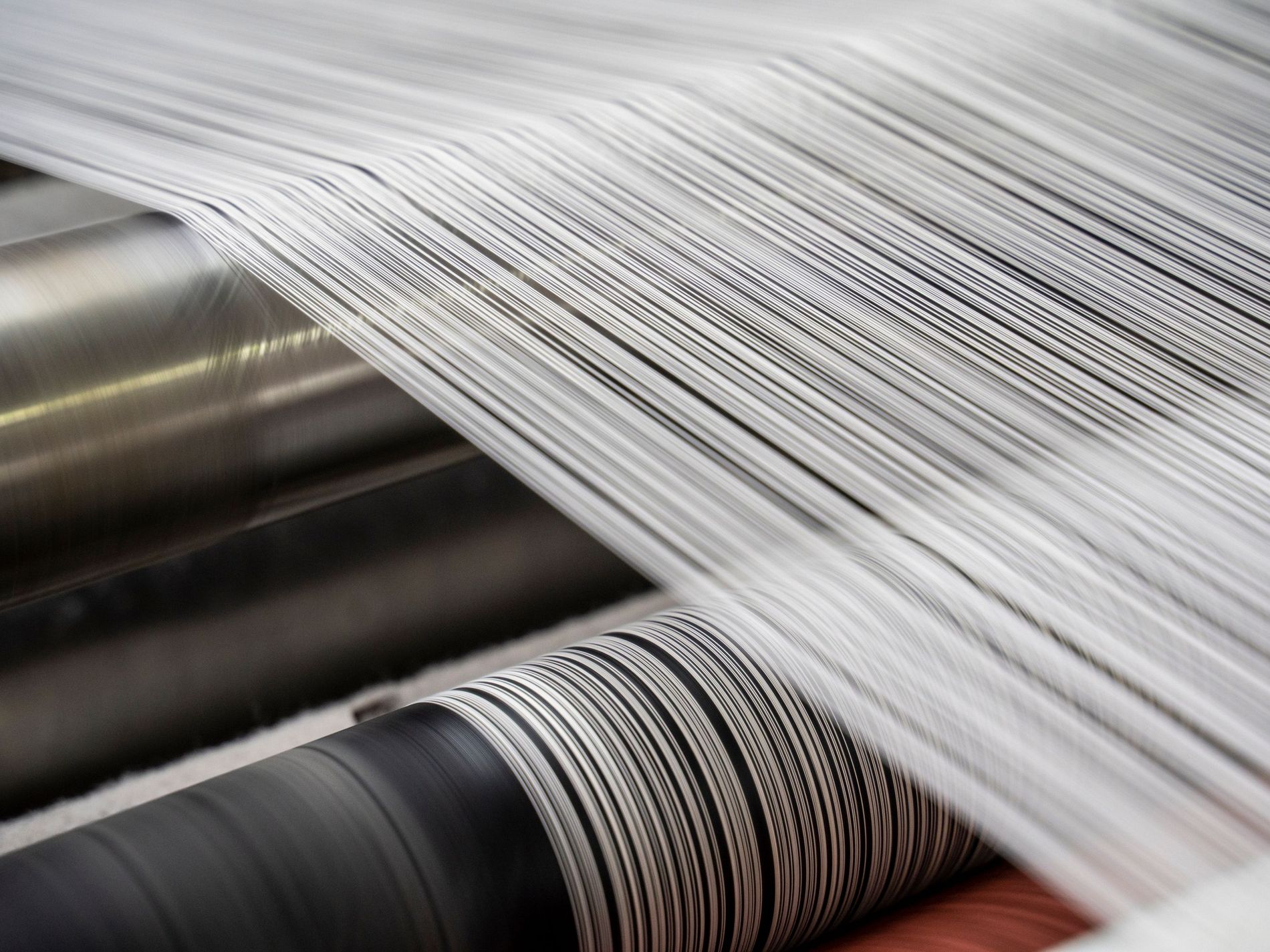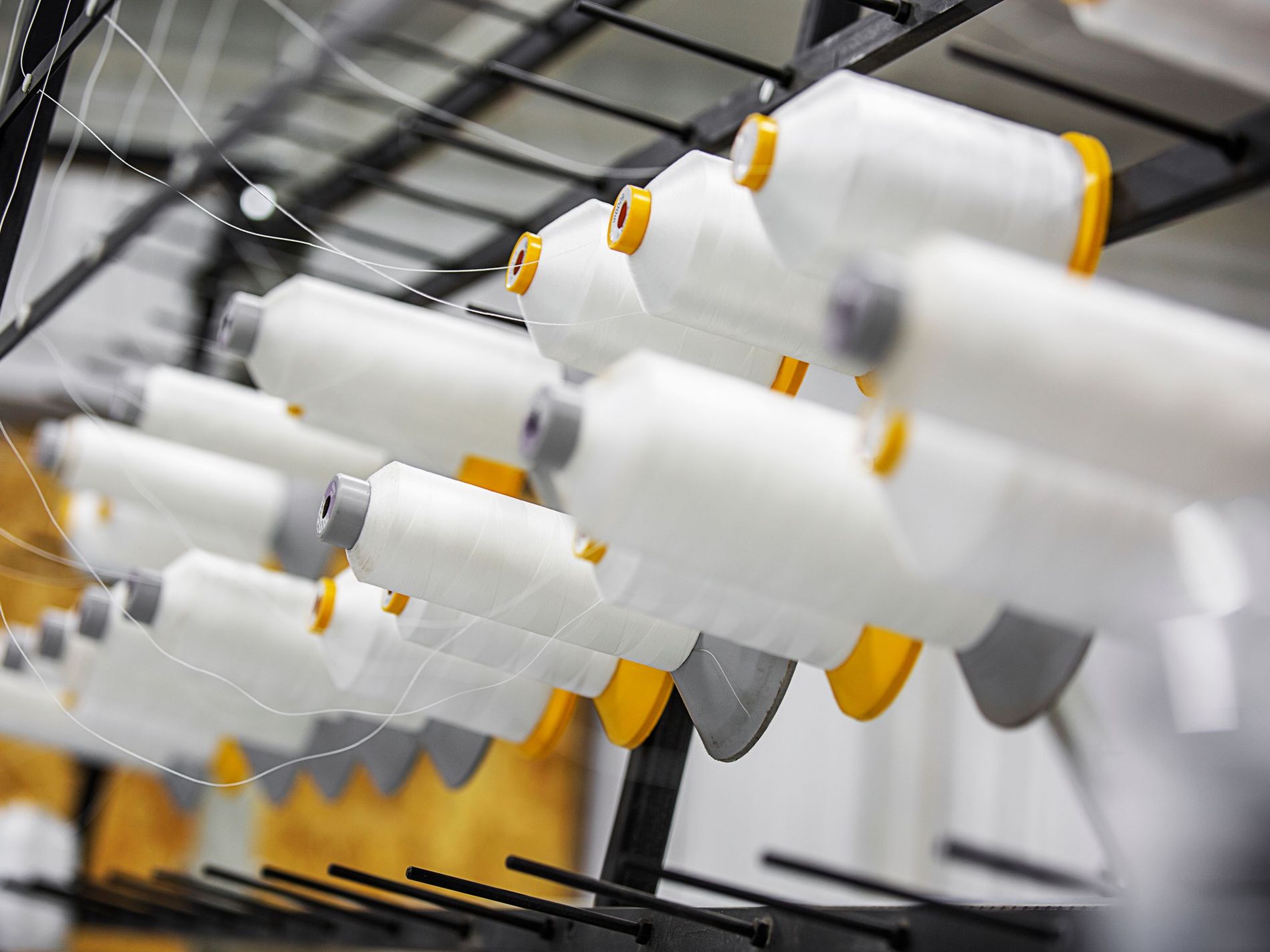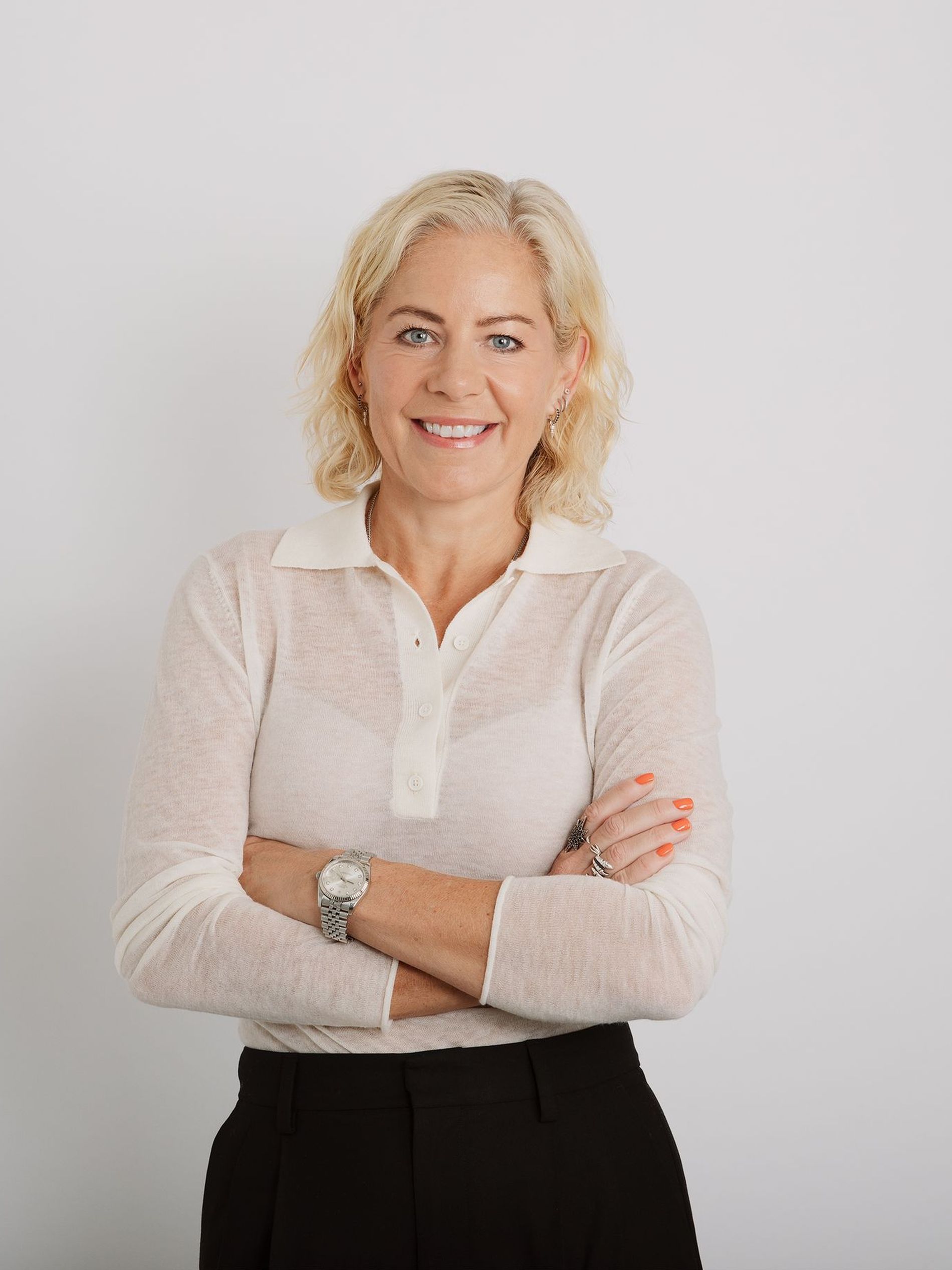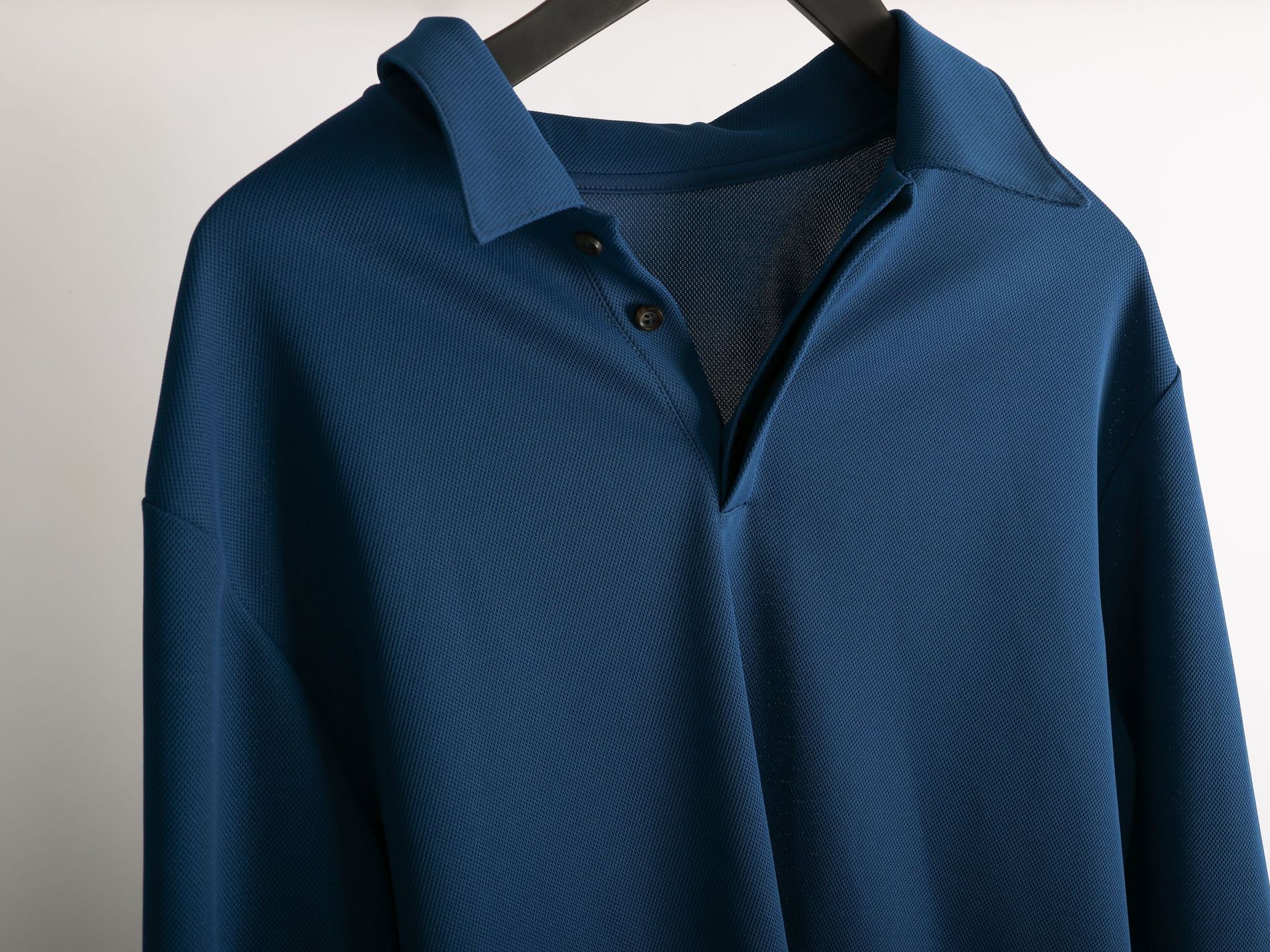Two and a half years in the making, Syre is the new name in the fashion circularity game that you're about to start hearing a lot more. Vogue Scandinavia sits down with the Swedish company’s co-founder and chair Susanna Campbell to hear more about how Syre is starting “the great textile shift” by drawing the line between ‘recycled’ and ‘circular’
The concept of recycled textiles is nothing new. But less than one per cent of textiles are actually recycled, according to the Ellen MacArthur Foundation. Compounding that number, the United Nations Alliance has named the fashion industry as responsible for a staggering 10 per cent of global carbon emissions: more than all international flights and maritime shipping combined. “They are scary numbers,” says Susanna Campbell, chair and co-founder of Syre, a new Swedish textile impact company initiated by Vargas Holding and H&M, and backed with major investment from TPG Rise Climate.
With the EU announcing big moves to reduce textile waste (most notably with its members needing to establish textile waste collection systems by January 2025), it’s a topic that's currently on the lips of most fashion industry players. However, for Campbell, the conversation started about two and a half years ago over lunch with some of H&M’s senior leaders. “They were doing a lot of investing in start-ups to help solve H&M’s sustainability challenge but they saw that none of them were scaling at the pace that they needed,” she says.
That conversation led to a secondary meeting, joined by H&M Group's chair of the board of directors Karl-Johan Persson and then-CEO Helena Helmersson. “We pretty rapidly realised that we have a very common view on what’s needed,” Campbell recounts. “At that point, we weren’t sure which part of the textile value chain we could address, but we saw there was a mega issue.”

Photo: Courtesy of Syre

Photo: Courtesy of Syre
Campbell, a board member and advisor for a number of other companies, including Northvolt and H2 Green Steel, has extensive experience in sustainability scale-ups. Still, Syre represents her first hands-on foray into the textiles industry – along with its complex value chain and mounting sustainability hurdles. In her words, “a mega issue”. Together with the H&M team and expertise from her side, they approached the matter by breaking down the Co2 issue into the different pieces of the value chain. “Where do those emissions actually happen? When you break it down, you see that actually the polyester actually counts for 30 to 40 per cent of those emission figures. A huge number,” she explains. “So if you want to address one thing and you want to address Co2, polyester fibre is the thing to go for.”
It’s far better for the environment if the bottles stay as bottles and you close the food packaging loop, while textiles are kept and recycled as textiles.
Susanna Campbell, co-founder and chair of Syre
It’s safe to say that most consumers probably have some recycled polyester pieces in their wardrobes or have encountered it packaged up and marketed by brands as a green product. Unfortunately, with 95 per cent of recycled polyester coming from plastic bottles, it breaks the closed loop system – recycled polyester is incredibly hard to recycle again. “It’s far better for the environment if the bottles stay as bottles and you close the food packaging loop, while textiles are kept and recycled as textiles,” Campbell says. “I think this is an industry that is used to a lot of greenwashing. Terms that don’t really live up to what they’re meant to be, like recycled polyester. There’s zero circularity in it. It might feel good when it’s recycled polyester, but it actually doesn’t solve the fundamental problem,” she adds.

Susanna Campbell, co-founder and chair of Syre. Photo: Courtesy of Syre
So, what is Syre’s big solution when it comes to polyester? “The only end game for polyester is to be incinerated or in a landfill. And that’s what we want to stop,” Campbell says. Instead, Syre’s model is based on large-scale textile-to-textile recycling, which creates an unprecedented demand for the tonnes of garments piling up in the aforementioned landfill. Textile-to-textile recycling enables a circular value chain, meaning the fibres can be recycled over and over again. According to Syre, it’s also more scalable, energy-efficient, and offers better quality than the current bottle-to-fibre technology. “In other words, there is a difference between recycled and circular,” Campbell says.
Syre officially launched last month, just a matter of weeks after the announcement of Renewcell’s demise. But Campbell is confident that Syre’s path will be drastically different. “Firstly, we’re dealing with completely different fibres. Polyester is 54 per cent of the world’s textile fibres, whereas Renewcell was about cotton to viscose – a much smaller fibre in terms of how you can sell it,” she explains. “We also take on more steps in the value chain than Renewcell did, and we have binding customer commitments ahead of building a factory.”
There is, in fact, a factory, being built – dubbed a ‘blueprint plant’ by Syre. The site in North Carolina, USA, will be up and running by the third quarter of 2024 and is the first step in Syre’s plans to have 12 gigascale production plans worldwide by 2032.

Photo: Courtesy of Syre

The very first jersey using Syre's circular polyester has already been produced by H&M. Photo: Courtesy of Syre
The moves being made by the EU’s policymakers are also stimulating the region’s sustainable ventures and have added a gust of wind to Syre’s sails, especially the mandatory implementation of waste collection systems. “The EU is already planning on how to collect textile waste. That’s already happening.” Campbell says. “But no one really knows what they are going to do with the waste that is collected. So suddenly, they turn up to us, and we’re able to say, ‘the waste can come to us, and we’ll make use of it.’”
“By being a buyer of polyester waste at large scale, we can have a huge impact,” Campbell goes on. “All of these terrible articles we read about the waste in Africa... If there is a buyer of polyester waste in these geographies, the waste – or at least a big chunk of it – ends up with Syre instead of in landfill or places it just shouldn’t be.”
By tapping into two polyester waste streams (post-consumer waste and direct industry waste from factories) Syre will reroute polyester’s one-way ticket to landfill or incineration to bring the material back into the hands of manufacturers. While H&M is on board, Campbell clarifies that it’s not an H&M initiative, and their reach will extend far beyond H&M Group – with its network of confirmed customers to be announced later in 2024.
Campbell also acknowledges that it will take more than just Syre for a whole industry, and its deeply engrained value chain, to change. “This needs to be a broad industrial initiative with many players, and there are many polyester users beyond the fashion industry,” she says, naming the automotive, home interiors and healthcare industries as other major polyester users. But it’s a first step in an exciting direction, or as Campbell puts it, “the start of the textile shift that is needed”.
